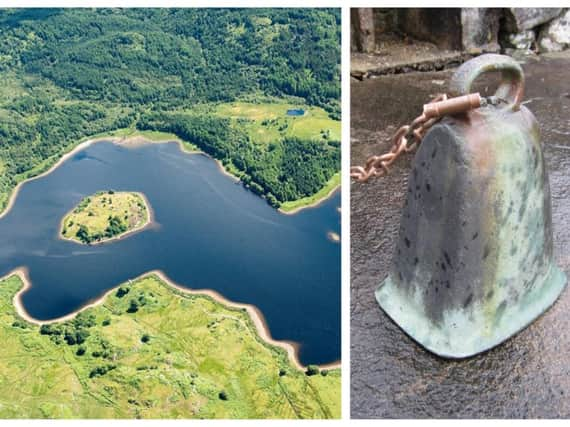Who stole this ancient bell from a lonely Scottish island?


Police are due to visit the island in Loch Shiel, Moidart, to continue their investigation, with locals said to be devastated by the theft of the piece, which could be more than 1,000 years old.
Ken Bowker, chairman of the Moidart History Group, said very heavy tools would have been needed to free the bell with the raid likely to have been a “planned affair”.
Advertisement
Hide AdAdvertisement
Hide AdThe bell may have been taken to St Finan’s 1,000 years ago by the Irish monk who lived in a cave and brought Christianity to this part of the Highlands. The island holds a special place in the history of Moidart and was later used as a burial ground for the chiefs of the Macdonalds of Castle Tioram, with the island covered with the graves of those who once ruled this part of the world. St Finan’s was also the “Black Lake” in the Harry Potter films.
Experts say the bell holds great religious and cultural value and is of a particular type found in Scotland and Ireland. For years, it was attached to the altar stone by an old loo chain but this was upgraded in recent times when Harry Clyne, who died three months ago, hand-forged a bronze replacement.
It is not the first time that the bell has been stolen. According to accounts, the bell was taken by a party of British soldiers following the 1745 Jacobite rising.
The thieves were chased for some 18 miles up the side of Loch Moidart with the chief instigator “tied to a tree and soundly flogged”.
Mr Bowker added: “Some people expect the bell to reappear – apparently when it was stolen after the ’45 it flew back to the island by itself.”
The island has recently become popular with visitors. Up until four or five years ago, only a handful of people made it to its shores but the rise in the number of kayakers on the water has led to an estimated 2,000 people making it to St Finan’s a year.
Mr Bowker said: “The bell has no monetary value but is of great religious and historical value and has huge significance for the local population. It is immensely sad that someone has no regard or respect for the feelings of local people and has seen fit to steal the bell for his or her own profit or perverted pleasure. A similar bell was stolen from Fortingall Church in Perthshire in 2017 – so was St Finan’s bell stolen to order?”
The long past of St Finan’s was recently brought to life by George Geddes, of the archaeological survey team at Historic Environment Scotland.
Advertisement
Hide AdAdvertisement
Hide AdMr Geddes and his team found some 700 features to record. While there is little left of the chapel, a small group of sandstone remnants and some surviving pieces of documentary evidence suggested it was built in the 13th or 14th century.
Legend has it that the church was built by clansman Allan Mac Ruair to recompense for his murder of a clergyman and for the destruction of another of church dedicated to St Finan at Invergarry.
Some fine late medieval stones in the graveyard are likely to record the burial of the clan chiefs, their wives and senior family members, although the early inscriptions are no longer legible.
Today, the graveyard is still in use, with the clan chief having the final say on who can be buried there. Both the Protestant and Roman Catholic communities of Sunart and Moidart use the island as a burial place, with Catholics taken to the north side of the island and the Protestants towards the south, according to accounts.